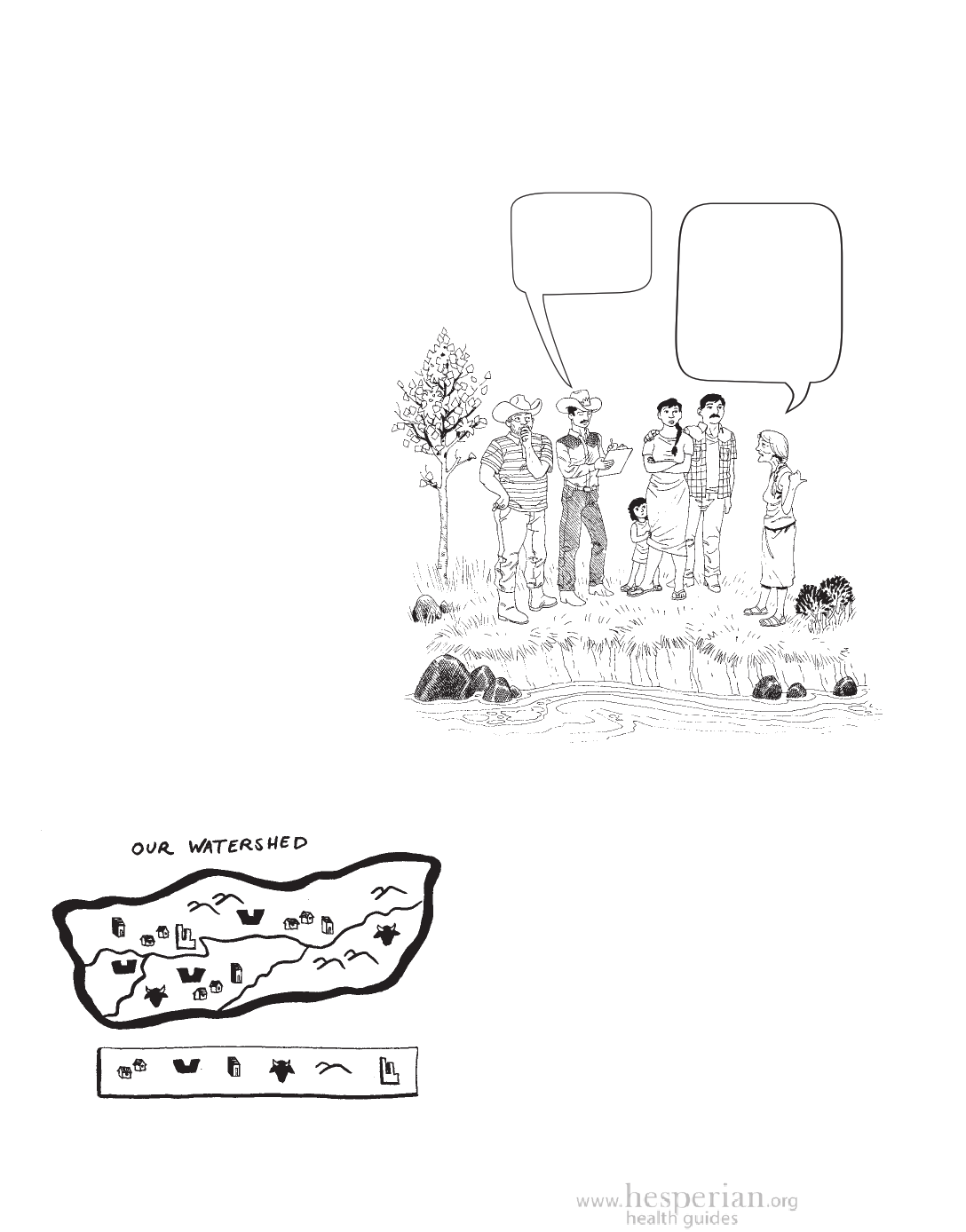
164 Protec ting Watersheds
Planning a community watershed project
The watershed team of the Aguan River Valley followed these steps in
beginning to protect their watershed:
1. Find out the condition of the watershed
As a group, with community leaders,
teachers and other people, visit places
important to the health of the watershed.
Depending on the size of the
watershed, this may take 1 day
or several weeks.
Why do you
think the
river is so
contaminated?
The water
downstream by
the factory is
warmer than
before. The rocks
where my husband
used to fish are
covered in slime.
Visit the main
waterways, and note where
they connect with one another.
Make notes about who lives in
which parts of the watershed,
and how land and resources are
used in different areas. Visit
the places where people collect
water, places where water may
become contaminated (such as
near factories, pastures, and
places where trash collects)
and other areas of concern.
Speak with people about
the changes they have noticed
over time. Hunters and people who fish know
where the animals are, and where they used to be, at different times of the
year. Your community is full of experts about your watershed.
river
homes
water toilet cattle
source
hills factory
2. Make a map or drawing of the
watershed
After these visits, discuss what you
have learned and how to best share
the information with the whole
community. Discuss what things can
cause harm to the land and water.
It can help to make a map of the
watershed and mark the places of
concern. Elders can help by making
maps of how things used to be and
how they have changed. (For more
about mapping, see page 15.)
A Community Guide to Environmental Health 2012